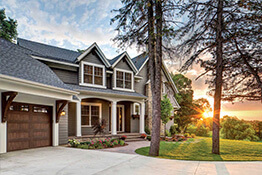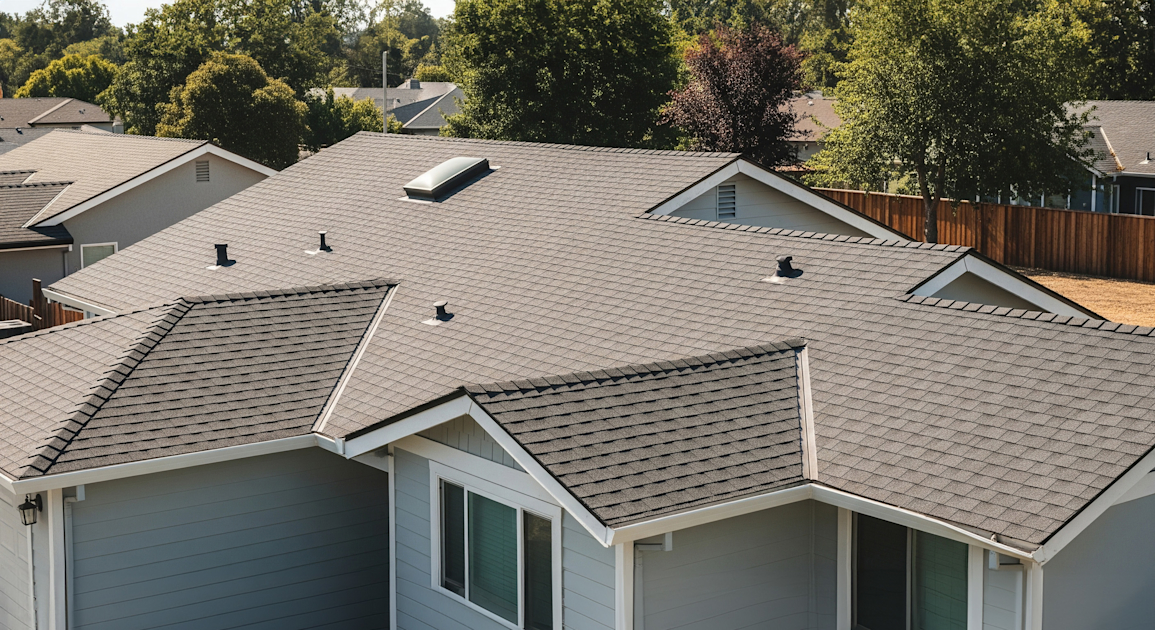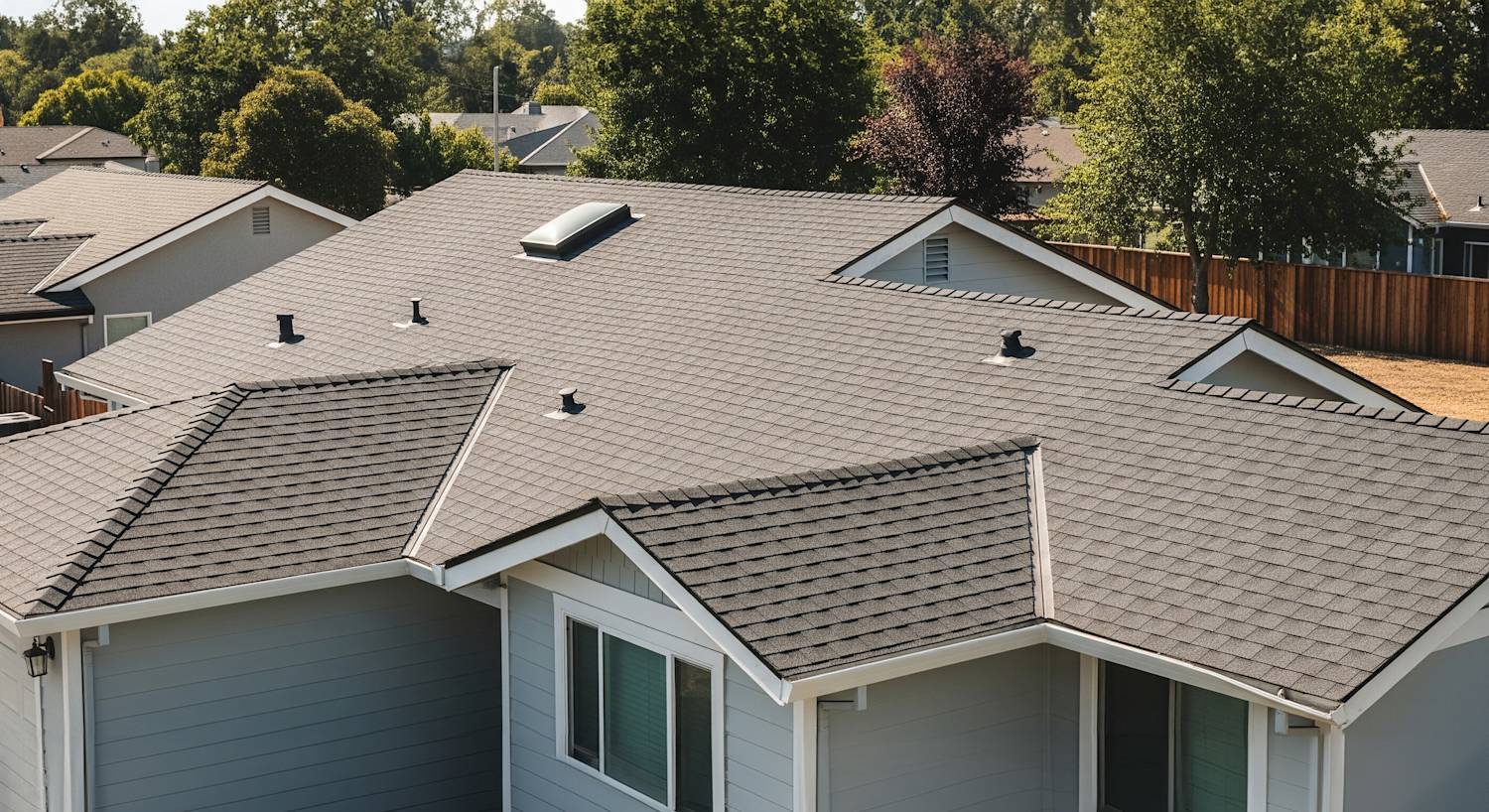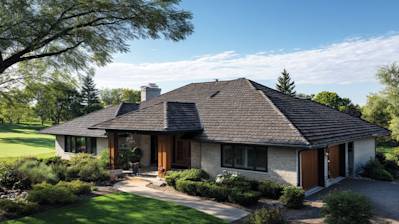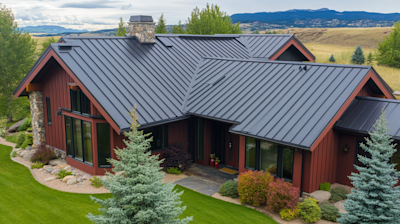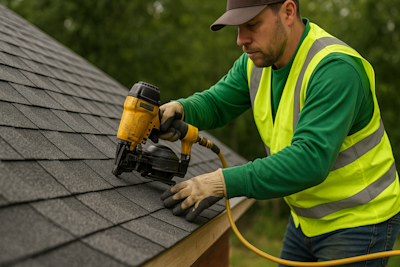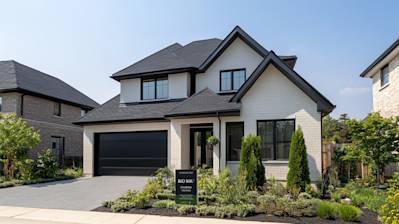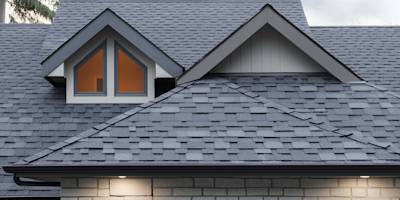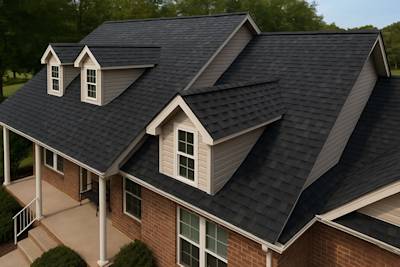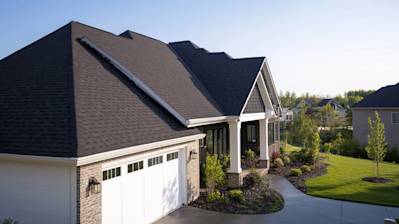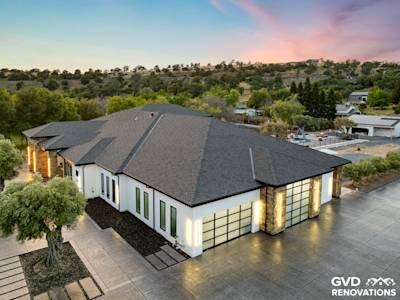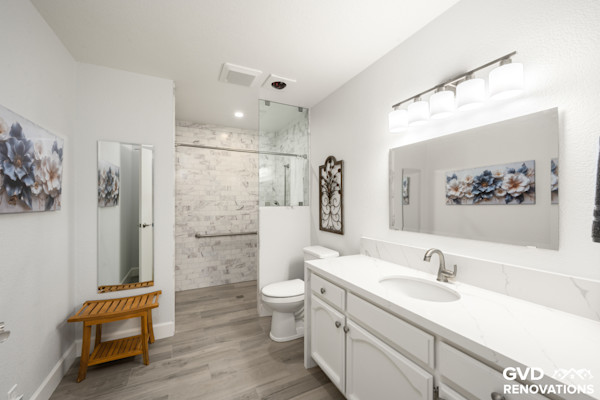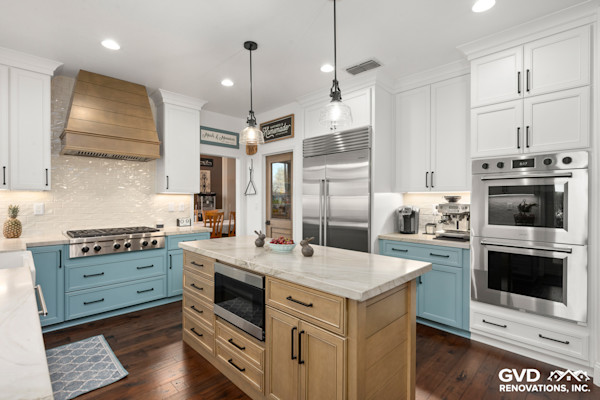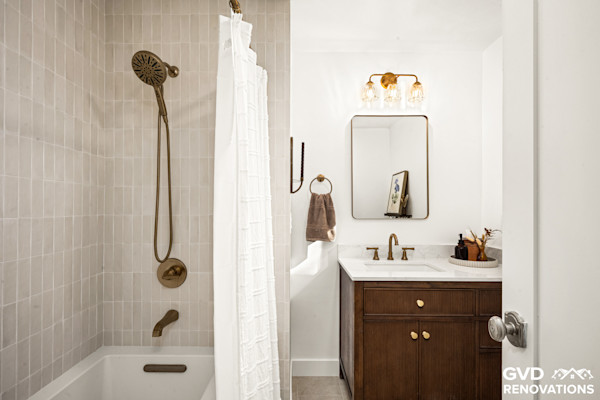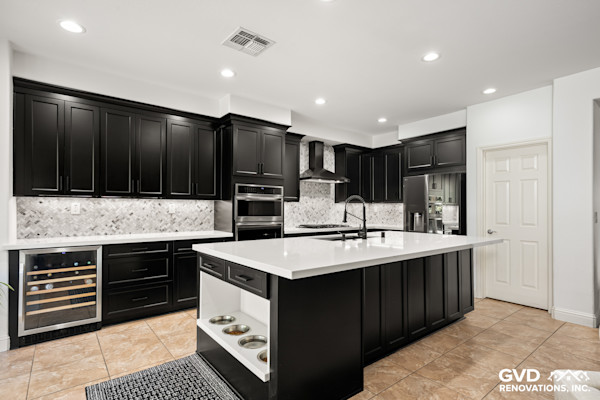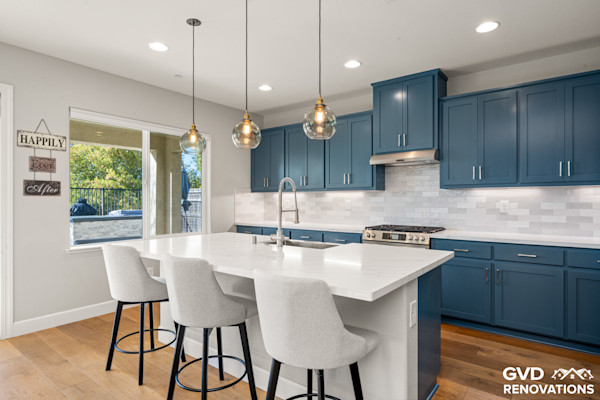Roofs are one of the most vital parts of a structure, whether it's your home, shop, or garage. There's considerable complexity, sophistication, and intricate design involved in constructing a roof. However, most people are unfamiliar with the various parts of a roof and their individual functions. Our comprehensive guide offers a deep dive into understanding the different parts of a roof.
Roof Frame
The roof frame, often made from wood or steel, is the skeletal framework that gives the roof its shape. At a high level, it is composed of:
- Rafters: These are the sloping beams that extend from the top of the roof to the external walls. They constitute the primary framework for the roof.
- Trusses: Trusses are pre-fabricated structures that support the roof and define its structure.
Decking
The decking, also referred to as sheathing, is a flat, surface layer that covers the roof structure. It serves as a base for affixing roofing materials and also adds another layer of protection to the roof.
Underlayment
Underlayment is typically made from felt or synthetic materials, and it's laid over the decking before the final roofing material is installed. It’s a water-resistant layer that provides additional protection against water infiltrations and ultraviolet light.
Flashing
Roof flashing, often made of metal, is applied around vents, chimneys, and other roof projections. It helps prevent water leaks by directing water flow away from these vulnerable points.
Shingles
Shingles are the top exterior layer most visible on a roof. They are often made of asphalt, but can also be crafted from wood, slate, metal, or other materials. Their primary job is to protect the roof from water damage while also contributing to a property’s aesthetics.
Gutter Systems
Gutters are the channels that direct rainwater from the roof into downspouts. They prevent water from eroding the foundation and damaging the siding or landscape.
Drip Edge
The drip edge is a metal strip attached along the edges of the roof. It directs water away from the fascia and into the gutter, protecting the underlying roof parts from water damage.
Vents
Roof vents ensure the circulation of fresh air in the attic area, preventing moisture and condensation build-up which can lead to structural damage over time.
Ridge Cap
The ridge cap covers the ridge (top) of the roof, creating a seal along its intersection point. It serves both functional and aesthetic purposes by aiding in roof ventilation and completing the design continuity of the roof.
Fascia
The long, straight board running along the lower edge of the roof is the fascia. It effectively acts as a barrier between the outside and the edges of the roof while serving as the primary attachment point for gutters.
Soffit
Extending between the top of the structure’s siding and the bottom of the roof overhang, the soffit covers the underside. It provides ventilation to the attic and protects rafters from weather elements.

Frequently Asked Questions about Parts Of A Roof
What do we refer to as the roof structure?
The roof structure refers to features such as rafters and trusses, which are specially designed to support the roof's weight. Rafters run from the roof's peak to the walls, providing a supportive framework, while trusses are assembled components that provide similar support.
Can you enlighten me on roof sheathing?
Roof sheathing, also known as decking, is a layer of boards or sheet material installed on the top of roof rafters. The main purpose of sheathing is to provide a stronghold for the roof covering. It also gives the roof structure required rigidity.
Can you name different types of roof covering?
Roof covering can be of various types and it includes materials such as shingles, tiles, metal, or certain types of plastic. Each type of roof covering has its own characteristics and aesthetics, which helps protect against environmental elements such as rain, snow, and sunlight.
I've heard of the term 'Underlayment'. Can you explain what it is?
Underlayment is a protective layer that is installed directly on the roof deck. It serves as a barrier against wind-driven rain and snow that can get beneath the roof shingles.
What do you mean by flashing in roof construction?
Flashing is a significant component of a roof which is typically made from thin pieces of impenetrable material such as galvanized steel. It's installed in every area of the roof that has been intersected by the structure, such as at the chimney and stack vents, to prevent water seepage.
What is a roof's drainage system?
The drainage system, including gutters and downspouts, is an integral part of a roof designed to guide water away from the roof's surface. Its primary objective is to refrain from water accumulation that may eventually lead to roof damage or create deferred structural issues.
What is a fascia in roofing?
The fascia is a visible flat board that caps the end of rafters outside a building, and may hold the gutters. Roof fascia is significant for a well-constructed and stable roofing system, and it also provides a smooth, neat appearance along the roof's edge.
Can you discuss a bit about Soffits?
Soffits are installed beneath the overhang of a roof eave. They assist with roof ventilation to help keep attics cooler during hot weather. Soffits are typically made from vinyl, an efficient material for withstanding water and heat.
What are the functions of gables and eaves?
Gables are the triangular sections of wall that sit between two sloping roofs. They act as the face of your property and protect from different weather elements. On the other hand, eaves are the edges of the roof which project beyond the face of the walls and throw water clear of the walls. They also provide significant protection against weather damage to the building's fabric, including its structural elements and its contents.
Shingles
Pros
Durability
Shingles, especially those made from asphalt, are very durable and can last for decades with proper maintenance. They can withstand harsh weather conditions, be it extreme heat, heavy rains, or even snow.
Variety
Shingles come in a wide range of colors, sizes, and styles, providing homeowners with many options to choose from according to their preferences and the style of their house. They can either go for a traditional or a contemporary look.
Easy installation
The installation process of shingles is quite straightforward, which means that they can be installed quickly, thereby reducing labor costs.
Cons
Vulnerability to wind
Shingles, particularly the asphalt variety, can be blown off by strong winds. This is because they are lightweight and are usually just nailed to the roof deck.
Difficulty in locating damages
The overlapping layout of shingles makes it difficult to identify specific areas that may have been damaged. This might result in small but important damages going unnoticed for a long while.
Environmental impact
Most shingles are not environmentally friendly as they are made from non-renewable resources and their manufacturing process contributes to pollution. Also, they contribute to landfill waste when they have to be replaced.
Rafters
Pros
Durability
Rafters, often made of wood, are very durable and sturdy, capable of withstanding heavy loads. With appropriate treatment, they can resist rot and insects.
Ventilation
The space between rafters allows for good ventilation, which can help maintain a cooler and more comfortable temperature within the house.
Aesthetics
In houses with exposed ceilings, rafters can create an aesthetically pleasing and rustic appearance.
Cons
High cost
The cost of rafters, including their installation, can be a lot higher compared to other roofing components. The materials and labor required for their construction makes them an expensive choice.
Complexity
The design and construction of a rafters system is complex and requires a skilled architect or carpenter. This makes its installation more time-consuming.
Flashing
Pros
Prevents leaks
Flashing, installed around projections and joints, plays a vital role in preventing water from seeping into the roof and causing leaks.
Enhances lifespan of roof
By preventing water seepage, flashing enhances the durability and lifespan of the roofing system.
Cons
Installation
Flashing installation requires precision to ensure a snug fit and prevent leaks. An incorrectly installed flashing may not effectively prevent water seepage.
Corrosion
Depending on the materials used, flashing can corrode over time, especially when exposed to harsh weather conditions. This may create an opportunity for leaks.
Trusses
Pros
Structural stability
Roof trusses provide important structural stability, resisting load pressures from wind and heavy snowfall.
Cost-effective
Manufactured off-site, trusses can usually be installed within a day, which reduces labor costs significantly compared to the construction of rafter roofs.
Cons
Flexibility limitation
Trusses are pre-engineered, which leaves little room for changes in the design or room layout once they have been installed.
Transportation
Due to their large size, transporting trusses from the manufacturing location to the construction site can at times pose logistical problems.
Underlayment
Pros
Weather protection
Underlayment provides an extra layer of protection against rain and wind, preventing these from penetrating through the roof into the house.
Easy installation
The installation of underlayment is fairly straightforward, requiring few specialized tools or skills.
Cons
Risk of water traps
If not installed properly, underlayments can trap water underneath which can lead to mold and rot.
Aging and wear
Underlayment can wear out over time, especially in harsh weather conditions, requiring replacement or repairs which might be costly.
Myths and Misconceptions about Parts of a Roof
There are a plethora of misconceptions surrounding the parts of a roof. If you've ever tried to fix a roof on your own or attempted to understand the process, you've likely encountered these myths. Misconceptions often lead to poor decision-making and expensive mistakes. Yet, they persist among homeowners and even some professionals. This section will debunk popular myths and clarify misconceptions about different parts of a roof.
Myths about Shingles
Let's start with the most visible and perhaps most misunderstood part of a roof: the shingles.
Shingles Have a Standard Lifespan
There exists a common belief that all shingles, regardless of the material, have a lifespan of around 20 to 25 years. It's a blunt generalization that could result in unwelcome surprises. Every material has a different lifespan. For instance, asphalt shingles typically last 20-25 years, wood shingles can last up to 30 years, and metal and tile shingles can last over 50 years. Climate, weather conditions, and maintenance often substantially influence these lifespans.
All Shingles Offer the Same Functionality
Another myth is that all shingles provide the same level of protection and functionality. Shingles vary greatly in their resistance to weather elements, insulation properties, and weight. Roofing materials are designed to perform best under specific conditions. For example, slate and tile shingles are excellent for hot climates, as they deflect heat. However, they are quite heavy and may require additional reinforcement.
Myths about Gutters
Gutters are another essential part of a roof that's riddled with misconceptions.
Gutters are a Standalone System
Many imagine gutters as a separate entity from the roof, which is far from the truth. They represent an integral part of the roofing system, designed to guide water away, preventing it from damaging the foundation and landscape around your home.
All Houses Need Gutters
A universal misconception is that all homes need gutters. While they are crucial for most houses, some homes can do without gutters, specifically those found in desert climates or properties with sloped landscapes.
Myths about Flashing
Roof flashing tend to be less mentioned, yet holds several misconceptions.
Flashing Never Needs Replacement
Some people believe that once you install flashing, it lasts forever. This myth is untrue, as poorly installed flashing, environmental damage or simple wear and tear can require its replacement long before the roof's lifespan ends.
Myths about Underlayment
Underneath the visible parts of the roof, the underlayment also shares some myths.
Underlayment Isn't as Crucial as Shingles
Some homeowners may think that the underlayment isn't as important as the shingles. However, the underlayment provides a needed barrier between the shingles and the roof decking, protecting the wood from moisture. It is as crucial as any other roofing element.
To get the most out of our roofs — and prevent expensive damages — we need to get the facts straight and dispel these myths. Not everything is as straightforward as it seems when it comes to the parts of a roof.
Summary
When you're a homeowner or renting a home, understanding the basic parts of a roof can make a huge difference. From the roof deck to the ridge, each part plays a vital role in safeguarding the structure from external elements. More informed decisions can be made regarding repair or replacement when you know about the various roof parts. Knowing all these parts minimizes the chances of getting fooled by roofing contractors, it's always good to be in the know.
Every part of a roof has a specific purpose and failing to maintain them can result in serious structural damage. So it’s not just about shingles or tiles, it's also about the underlay, flashings, gutters, and other essential parts that make up the watertight and weather-resistant parts of your roof. It’s essential to remember that each part is equally important and requires proper maintenance to ensure the overall longevity of your roof and your house.
Starting from selecting the right type of roofing materials based on the locational and architectural needs of your home, to understanding how each part works together to deliver a secure and protective cover, the parts of a roof are a lesson in civil engineering at its most practical. It goes way beyond aesthetics and looks. So, next time you’re having any roofing issues, or even if you’re just up there to hang Christmas lights, remember the intricate structure above your head that works tirelessly to keep your home safe and dry.
About GVD Renovations & Remodeling
GVD Renovations & Remodeling is a top-rated, family-owned home improvements and renovations business, proudly serving the Roseville, CA community. With over 20 years of experience in the industry, we are passionate about creating beautiful spaces that are functional, energy-efficient, and stand the test of time. Specializing in everything from kitchen and bathroom remodels to home additions and exteriors, we deliver outstanding craftsmanship and exceptional customer service. Whether you're looking to overhaul a dated aesthetic or give a much-needed facelift to worn-out spaces, we're committed to bringing your vision to life - your satisfaction is our greatest measure of success!
This article is for general information only and not professional advice. Always consult a licensed contractor before making project decisions. Product details, specifications, or warranties may have changed since publication. Brand and product mentions reflect opinion, not endorsements or guarantees.
Tags: roof structure, roofing materials, roof components,
